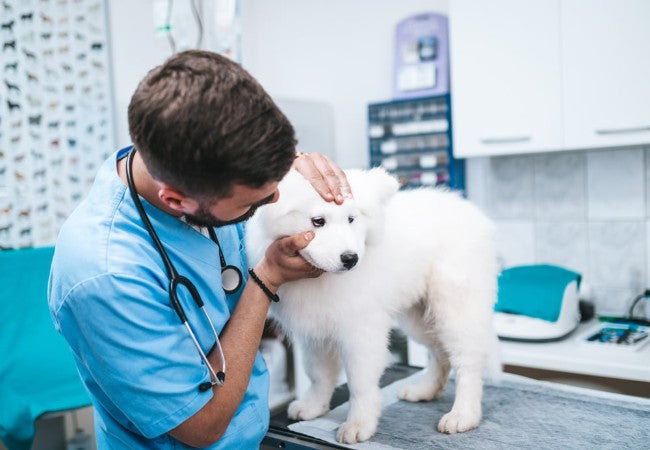Vet-Approved Guide: Angular Limb Deformities in Dogs – Causes, Diagnosis & 2025 Treatment 🐶🐾

In this article
Vet-Approved Guide: Angular Limb Deformities in Dogs – Causes, Diagnosis & 2025 Treatment 🐶🐾
By Dr. Duncan Houston BVSc
Angular limb deformities (ALDs) occur when one bone stops growing early or grows faster than its paired bone, leading to bends, twists, and joint misalignment. This often affects young dogs as their bones are still developing. Left untreated, these deformities can cause pain, arthritis, and difficulty moving. Early detection and treatment are key. 🛡️
🔍 Common Types & Symptoms
- Carpal valgus: front paws turn outward
- Carpal varus: front paws turn inward, elbows may bow out
- Visible twisting, bow-legged appearance; limping or pain when joints are touched
🧬 Causes of Deformity
- Premature growth plate closure: trauma or fractures affecting growth plates, especially in radius/ulna or tibia/fibula
- Developmental disorders: conditions like hypertrophic osteodystrophy or genetic predispositions
- Nutritional imbalance: especially in large-breed puppies fed improper diets
🩺 Diagnosis
- Physical exam shows abnormal limb angle and joint stress
- X‑rays confirm bone structure, assess injury, and evaluate joint health
- CT scan or CORA method for complex or multi-directional deformities
- Referral to a board‑certified surgeon for advanced diagnostics and surgical planning
🛠️ Treatment Options
✅ Conservative Management
- No intervention for mild deformities—monitor for arthritis
- Pain relief with NSAIDs (e.g., carprofen, grapiprant) and joint supplements (e.g., Dasuquin)
- Weight control and low-impact exercise
🔪 Surgical Correction
- Ulnar osteotomy (DPUO): releases pressure so the radius can realign in growing puppies
- Corrective osteotomy: wedge-cut and plate bone in fully grown dogs
- External fixators may be used for growth modulation in young dogs
🏥 Post‑Surgical Recovery
- Rest and splinting/bandaging for 6–12 weeks; external hardware may remain for several weeks
- Pain control with NSAIDs or gabapentin; anxiety relief like trazodone for active puppies
- Physical rehab to restore strength and range of motion
- Regular re‑checks and X‑rays to monitor bone healing
📈 Prognosis
With timely surgical intervention, most dogs regain good limb function and avoid arthritis. Prognosis is best before joint damage occurs; delayed surgery may limit success. General outcomes are good to very good, with many returning to normal activity.
🛡️ Prevention Tips
- Feed AAFCO-approved diets tailored for growth, especially for large breeds
- Avoid high-impact play or jumping during bone development
- Supervise pups closely to prevent falls and injuries
- Schedule regular vet checkups to catch injuries early
📱 Vet‑Approved Tools
- Ask A Vet: 24/7 help with orthopedic signs and post-op rehab. 🩺
🎯 Final Thoughts
Angular limb deformities can compromise mobility and cause pain if not addressed early. Veterinary evaluation, advanced imaging, and appropriate surgical correction are essential. Most dogs treated at the right time go on to live active, pain-free lives. If you notice abnormal limb angles or limping, see your vet or orthopedic specialist promptly. 🐾
For expert guidance and peace of mind, download the Ask A Vet app today. 📲🐶






